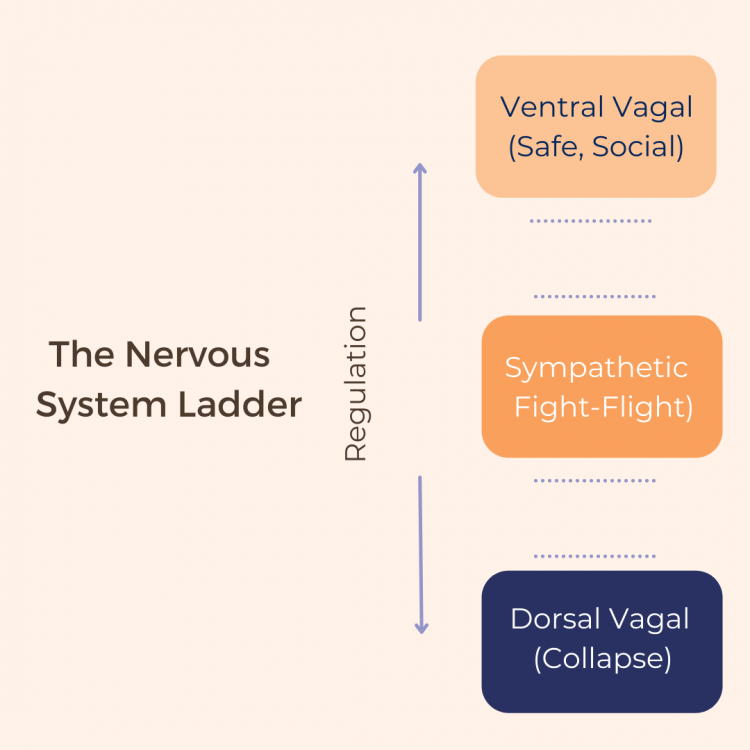Having a hard time ‘calming down’ right now?
It makes sense, when you know that the nervous system is responsible for deciding when we’re safe, deciding when we need to run, or freeze, and when we need a nap or to recover (sometimes looks like being frozen, stuck or “lazy”(which of course, it’s not). It also though wants us to NOT always be doing that. It wants us to connect with others, get hugs, and feel peaceful. When it’s in its most optimal state, it’s at the top of the ladder (and physically, in the upper portion of the head, neck and upper back).
It used to be thought that we just operated from on or off mode as a stress response, but a theory called the polyvagal theory changed that. This theory suggests our system is always assessing what is best for us, and will pull us into shut down or connection or adrenaline when we need to be, but we typically are not supposed to stay there.
However, the challenge is long term stress + not a lot of peaceful or positive things = the nervous system looking for threats and taking us into recovery, shut down or panic. It can feel like a lot of work to acknowledge where we are (in one or both of those coping places) and also introduce things to help the system feel safe. Safety, connection, and peace help our system to slowly recover from exhaustion and adrenaline. But it does take effort, and sometimes that’s slow work.
Any of this sound familiar?
I’ll go over some exercises in a video to consider if you’re not sure where to begin 🥰
Credit to modified image from Deb Dana 2008. Polyvagal Theory for Therapists.
#fightorflightresponse #stressrelief #stressmanagement #griefsupport #burnoutprevention #burnoutrecovery #playtherapy #glimmer #mindfulliving #mindfulrecovery #breathingtechniques #breathingexercises
Having trouble ‘calming down’?

Comments
© 2022 Aoife Earls Naturopathic Corporation | Privacy Policy